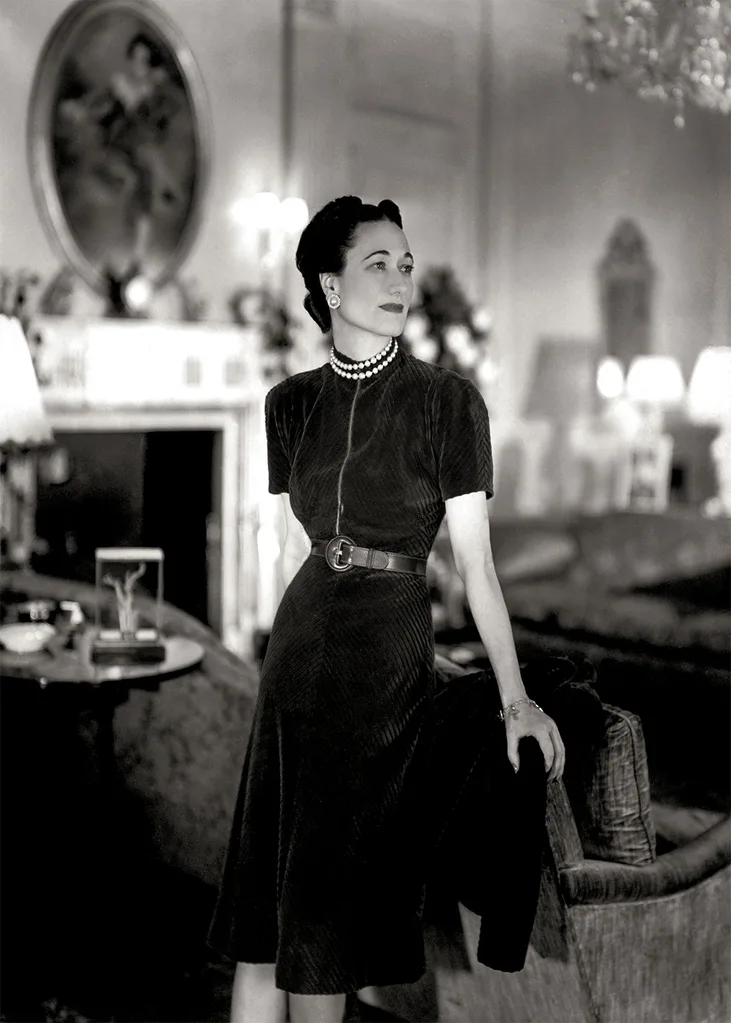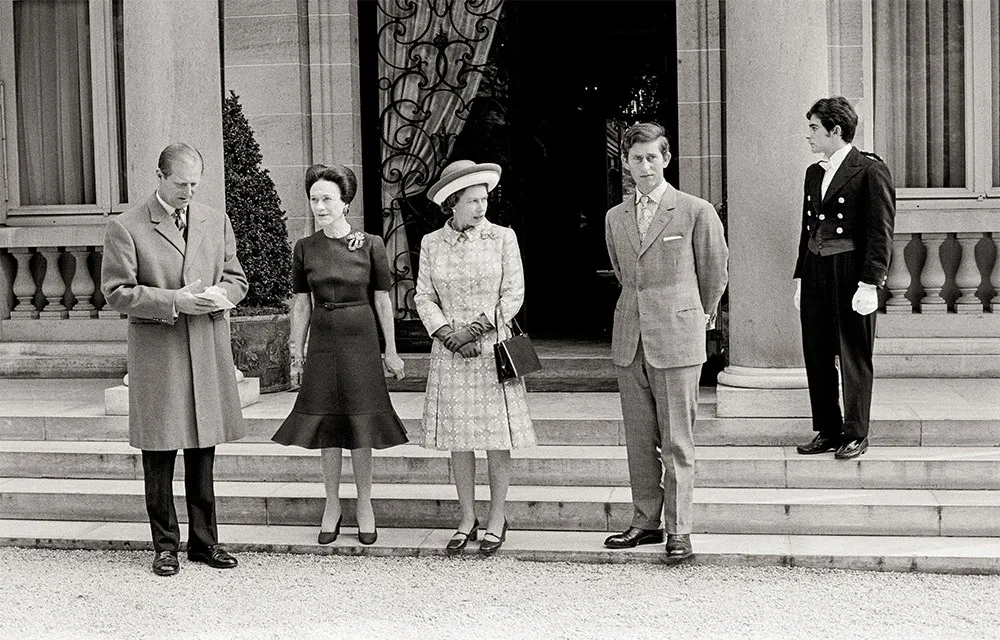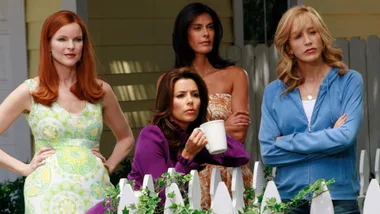She couldn’t wear white, not with having had two husbands already.
But the ice blue couture gown by Mainbocher would do nicely, Wallis Simpson decided. It was supremely elegant, high-necked with long fitted sleeves, and bias-cut from clingy silk crepe so that it showed every angle of her impeccably slim body. “You can never be too rich or too thin!” thought Wallis. That had a nice ring to it.
She ought to make it a catchphrase. Her fiancé, the Duke of Windsor, who until very recently had been Edward VIII, King of the United Kingdom and the Dominions of the British Empire, and Emperor of India, was fussing around straightening a vase of flowers. Wallis couldn’t think why he was bothering – there weren’t any important guests to see how pretty their borrowed French villa looked today. And it did look pretty. Wallis had arranged for society florist Constance Spry to deck the place out. Spry had outdone herself – there were enough blooms to fill the Chelsea Flower Show in every corner of the Château de Candé. And yet society photographer Cecil Beaton was the only person of note who would see the display. There were only 16 guests.
Wallis had not invited her own family to her wedding on June 3, 1937. Almost all of the duke’s illustrious friends had declined to attend. Precisely no-one from the British royal family was coming. Not Edward’s mother, Queen Mary. Not his younger brother, Bertie, who, two weeks earlier, had been crowned George VI. And not Bertie’s wife, the former Elizabeth Bowes-Lyon, now the new queen, who reportedly loathed Wallis, referring to her as “a certain person” and refusing to have her in the house. The scandalous Mrs Simpson was being shunned. “Well,” thought Wallis, “we’ll see about that.”

Wallis had to believe that her husband-to-be would talk The Firm around. Once they saw how serious he was about her, and how happy she made him, they would soften. Surely. She allowed herself a moment to imagine how fine a particular tiara of Queen Mary’s would look against her jet-black hair; she’d have to have the stones reset, of course. Then she snapped out of her reverie. “Darling!” she called, “shall we go down? I am ready now.” Alas, Britain was not ready for its former monarch to marry an American commoner and double divorcée. And one he’d started seeing while she was still married. Just 10 months into his reign, King Edward VIII, 43, chose Wallis, nearly 41, over the throne, shocking the world. He was the first British monarch to abdicate, and in doing, shook the foundations of the institution itself. And for what? A woman! That woman …
On December 11, 1936, the day after his formal abdication, Edward made a speech, broadcast on BBC Radio, explaining: “I have found it impossible to carry the heavy burden of responsibility and to discharge my duties as king as I would wish to do, without the help and support of the woman I love.” The next day, his brother Albert, now King George VI, granted him the title, his Royal Highness, the Duke of Windsor. For the rest of their lives, the Duke and Duchess of Windsor would remain ostracised, and to all intents and purposes banished to France. Wallis was never given the right to refer to herself as Her Royal Highness, and except for a posting in the Bahamas during WWII; Edward was never given an official job, although he craved one. They were to live out their days in an endless loop of dinner parties, shopping and golf, adored by an army of pug dogs, but no children, and no subjects, with only each other to blame. Over the years, gossips said all sorts of things about Wallis – she was a gold-digger, a brash American, a manipulative seducer who ensnared the king with sexual tricks she’d learn from a Chinese prostitute, even that she was really a man –but rarely was Wallis charged with being happy.
Wallis Simpson was born Bessie Wallis Warfield on June 19, 1896, in Blue Ridge Summit, Pennsylvania. She dropped the Bessie, which she dismissed as a name for a cow, from then on going simply by Wallis. It suited her. The Warfields were well off and well bred, but when Wallis was seven months old, her father, Teackle, died of tuberculosis. In a precarious position financially, her mother, Alice, began sewing to make ends meet. While Alice worked, Wallis spent time with her aunt Bessie, an upright woman with a fondness for severe black dresses, and a formative influence. Alice remarried and there followed a period of stability with Wallis at school, but when she was 16, her stepfather also died, and mother and daughter were back where they started.

This precarious childhood made Wallis hanker after security and status. She was determined to be presented as the Baltimore equivalent of a debutante, even though Alice could not afford the dress (luckily she could sew). It’s tempting to surmise that Wallis’s controlling nature in later life– she never allowed herself a hair out of place, and famously nagged the duke – has its origins here. At a party Wallis met a dashing US Navy pilot named Earl Winfield Spencer Jr, a whirlwind romance ensued and, in November 1916, they wed. Wallis aged 20 finally had a handsome husband and the security she craved. Except she didn’t. Spencer was a drinker with a terrible temper. According to Ken Bayliss, author of Secret Royal History, Spencer was also a “bisexual adulterer” and when they moved to Washington DC they both had affairs.
They had crazy fights; he once locked her in a bathroom in a fit of pique. In 1922, he was posted to Hong Kong, where, after a sojourn in Paris, Wallis joined him. There, “Together, and separately, they went to high-class brothels”, claims Bayliss. “She was fascinated by it all and, being a quick learner, had the girls show her the sensual massage they specialised in. Her husband threw in the towel and succumbed to his more predominant gay side to live with an artist.” Rumour has it Wallis worked for a time as a hostess in Shanghai.
What can be said with certainty is that while there she did something else unthinkable in polite society of the day: she filed for divorce. By the time it was granted, in 1927, she’d already started seeing a married man, Ernest Simpson, in the US. When his divorce came through, they married, and in 1928 Wallis became Mrs. Simpson. According to Anna Sebba, author of That Woman, The Life Of Wallis Simpson, Duchess Of Windsor, he was madly in love with her; she didn’t feel the same, but was attracted to “his dependability, the air of security and breeding that he radiated. He was good looking and in love with her.” The Simpsons moved to England with Ernest’s job and soon fell in with the society party crowd. Now this was fun; Wallis was in her element.
Wallis turned her talents to creating the illusion of a regal existence through style
Meanwhile, Edward, then Prince of Wales, was enjoying his glittering nightlife phase. With his mistresses, socialite Freda Dudley Ward and Lady Thelma Furness, he was a much in-demand dinner guest, and trendsetting dresser – his fashion choices were written up in the newspapers. He met Wallis around 1934, and was soon in love, but there was the small problem of Ernest. Edward was a new style of royal. Gorgeous and a little frivolous (he once had a fling with a French courtesan), the prince was seen as rather dangerous with a mind of his own and a social conscience. He didn’t want to be like his father, the stuffy George V. “The monarchy must change with the times,” Edward said in an interview in 1970, noting that through history it had done exactly that. It was the grieving widowed Queen Victoria who ushered in the famously austere era named after her. But when she was young and newly married, the court had been fun, and before Victoria was crowned, it had been dissolute. Edward wanted to do things differently. Some said he never wanted to be king.
Many accused Wallis of plotting to become queen, but according to Anna Sebba, she wanted nothing of the sort. In fact, Sebba writes, Wallis tried to leave the king at the height of the abdication crisis. “Wallis was utterly genuine in her desire to disappear from the king’s life, if only to preserve her own sanity rather than from motives of altruism or to protect the king, let alone the institution of the monarchy.” But the king was both too stubborn and too smitten to back down.
Queen Mary never forgave her son for neglecting his kingly duty. She died in March 1953, and he returned, briefly, to attend the funeral. “My sadness was mixed with incredulity,” he wrote to Wallis who, still persona non grata, remained in Paris, “that any mother could have been so hard and cruel toward her eldest son for so many years … I’m afraid the fluids in her veins have always been as icy cold as they are now in death.” With no palace to inhabit or official duties to perform, Wallis turned her talents to creating the illusion of a regal existence through style. Hiring the best decorators, she filled their houses at Le Moulin de la Tuilerie in the Chevreuse valley, and in the Bois de Boulogne in Paris, with elegant antiques, while the walls were hung with imposing royal portraits. Her wardrobe was chic with exquisitely cut suits and pieces by Balenciaga, Chanel and Givenchy. She dieted obsessively, and had her hair dressed by Antoine of Paris. All of this set off her jaw-dropping jewels. Edward had made a habit of ordering elaborate pieces from Cartier, sometimes resetting old family stones. Working with Cartier’s chief designer, Jeanne Toussaint, became a passion. At Cartier, at least, the duke and duchess might carry on like proper royals.

The duke died of throat cancer in May 28, 1972, in Paris. Wallis became increasingly paranoid that the royal family, led by Lord Mountbatten, planned to spirit away her husband’s possessions and leave her destitute. While she still ate like a bird, she upped her drinking, and a series of falls saw her in hospital. At one point, she broke her hip. Wallis died in 1986, and was buried, according to Edward’s wishes, by his side at Windsor Castle, embraced in death by the country that had never welcomed her in life. Her final decade was one of misery and mystery. If the couple had been fairly isolated in exile, in widowhood the duchess was reportedly forced to be a complete recluse.
In Behind Closed Doors: The Tragic, Untold Story Of The Duchess Of Windsor, biographer Hugo Vickers claims she was kept prisoner in her rooms by her so-called carer, an evil lawyer named Suzanne Blum. Too frail to protest, Wallis was fed by a tube, her friends kept from seeing to what depths she’d sunk. It wasn’t the royals who stole her antiques, writes Vickers, it was Blum. Turns out you can be too rich and thin after all.










